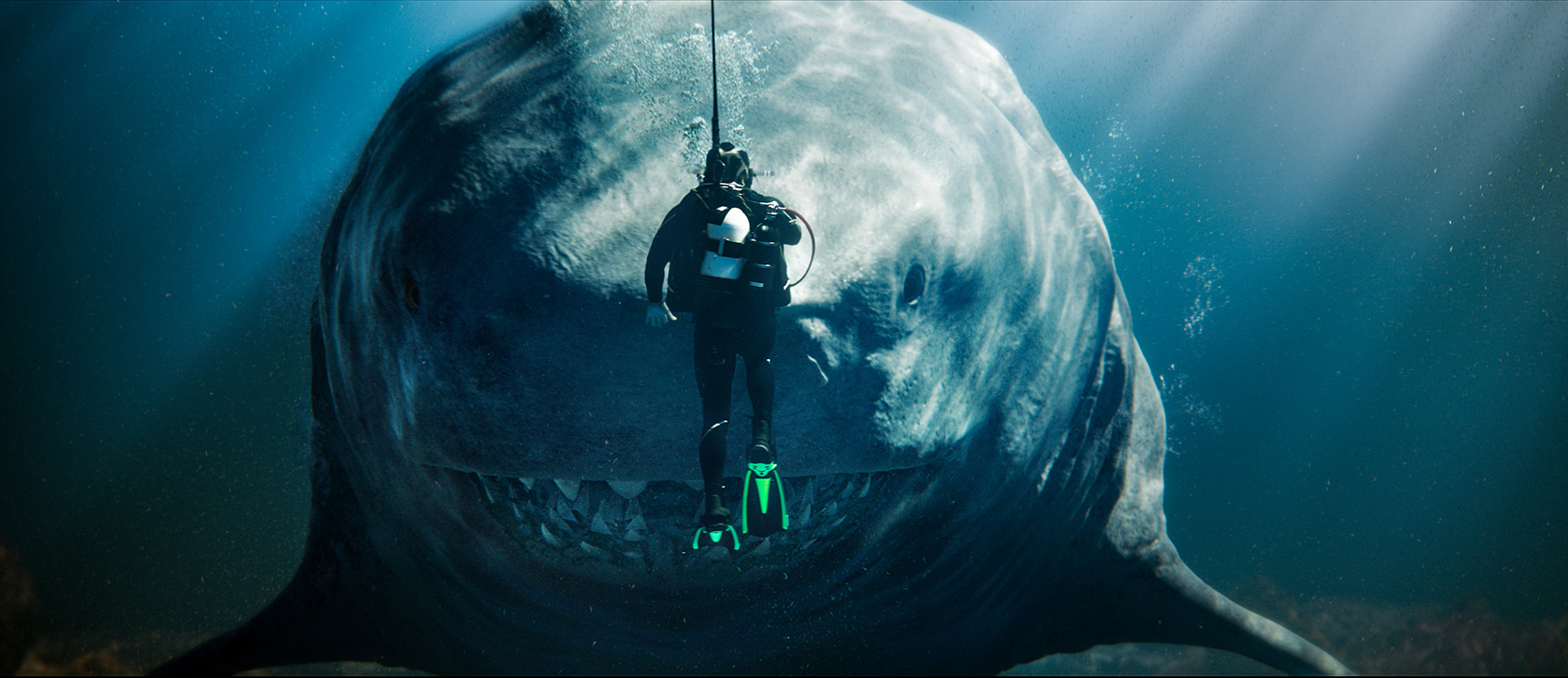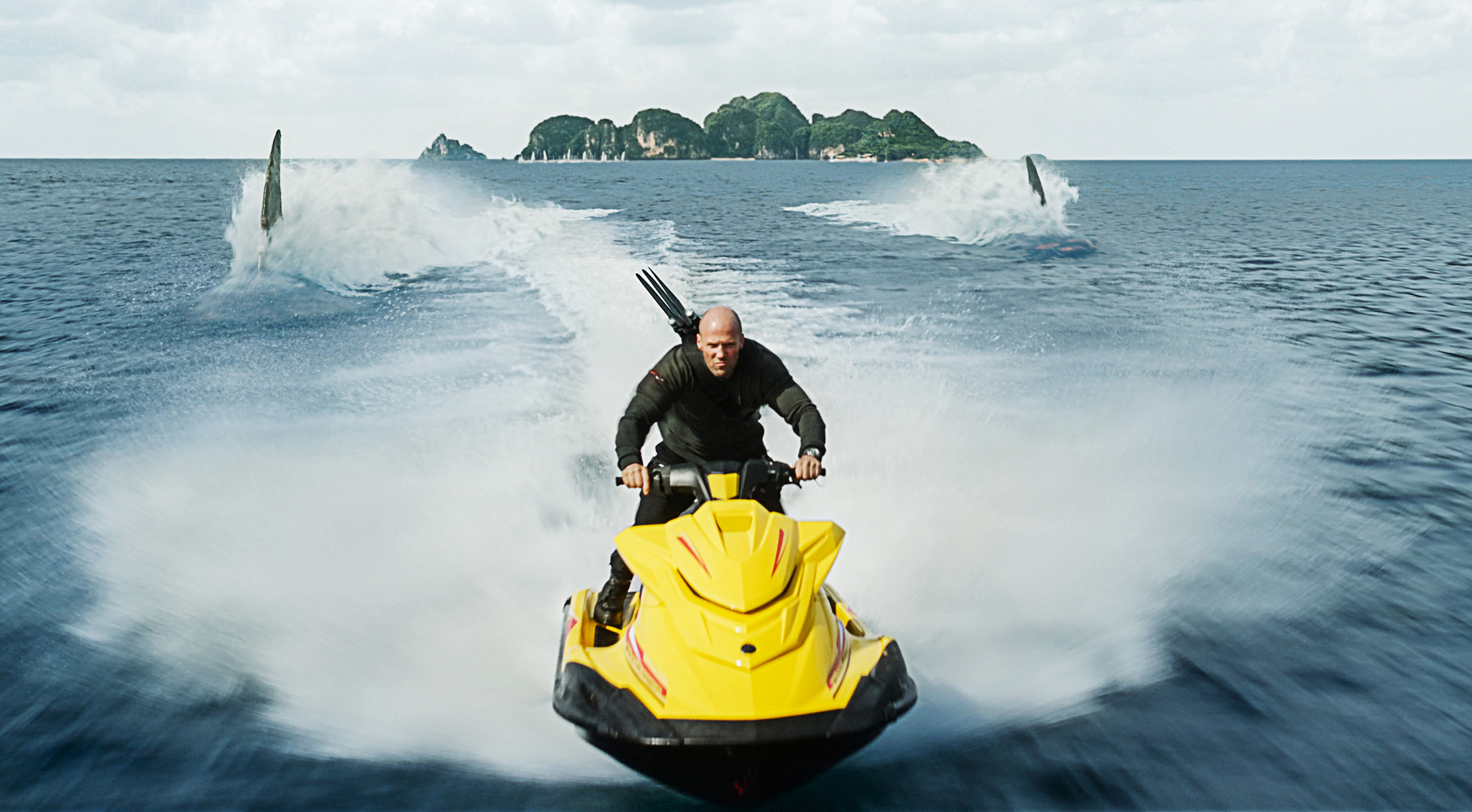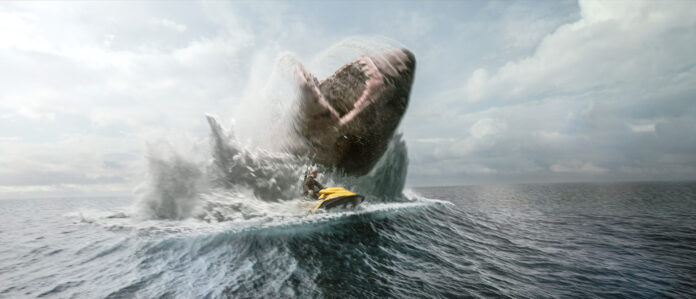Get ready for the ultimate adrenaline rush this summer in “Meg 2: The Trench,” a film that promises a larger-than-life thrill ride, surpassing its 2018 blockbuster predecessor. The action in this sequel reaches even higher heights and explores greater depths with multiple massive Megs and much more excitement!
“Meg 2: The Trench” is presented by Warner Bros. Pictures and CMC Pictures, boasting an ensemble cast headlined by Jason Statham and Wu Jing. Other talented actors joining the fray include Sophia Cai, Page Kennedy, Sergio Peris-Mencheta, Skyler Samuels, and Cliff Curtis.
Directed by Ben Wheatley, the screenplay is penned by Jon Hoeber & Erich Hoeber and Dean Georgaris, with a screen story by Dean Georgaris and Jon Hoeber & Erich Hoeber. The inspiration for the film comes from Steve Alten’s novel, “The Trench.” Lorenzo di Bonaventura and Belle Avery produce the movie, while Jason Statham, Cate Adams, Ruigang Li, Catherine Xujun Ying, Wu Jing, E. Bennett Walsh, Erik Howsam, Gerald R. Molen, and Randy Greenberg take on executive producer roles.
Behind the camera, director Wheatley is joined by director of photography Haris Zambarloukous, production designer Chris Lowe, and editor Jonathan Amos. The visual effects are supervised by Pete Bebb, and costume design is led by Lindsay Pugh. The film’s captivating music is composed by Harry Gregson-Williams. Get ready to dive into the thrilling world of “Meg 2: The Trench” and prepare to be amazed!
The production of the film took place in Thailand, with some scenes shot on soundstages at Warner Bros. Studios Leavesden. Production designer Chris Lowe embraced the challenge of creating visually captivating environments that transport the audience into exciting worlds. He emphasized the art department’s role in pushing the boundaries of realism to make everything feel authentic, even with the presence of a non-existent 65-foot shark, “Meg.”
For the setting of Fun Island, the production utilized Paradise Beach on Phuket, enhancing it with a constructed pier and restaurant to establish a luxurious holiday resort destination. A studio backlot was also created in a parking lot, providing a versatile location for action sequences, including a cabana scene with water added later through visual effects.
To film sequences on water, a nearby hotel with its own pier served as a safe launch point for around 40 boats and over 200 crew members. For practical underwater scenes involving the actors, Stage D at Leavesden, equipped with a six-meter deep and 20-meter wide tank, was utilized.
The creation of the Zhang Institute involved collaboration between Lowe and director Ben Wheatley. Inspiration was drawn from the real world, incorporating elements from beautiful Mediterranean beaches and the London Aquatics Centre. The resulting structure served as a gateway to trap the research Meg, Haichi, in a natural bay. The overall technological aesthetic aimed for a sleek look, influenced by figures like tech entrepreneur Elon Musk, while the interiors reflected water, sun, and sea elements, with a nod to Chinese design.
Designing the Dive One and Dive Two deep-sea submersibles followed the mantra of “Bentley Meets JCB,” combining aspects of luxury vehicles and construction equipment. The dive suits, conceived by costume designer Lindsay Pugh, were a complex engineering feat. Each suit consisted of an exosuit, under suit, practical helmet, and breather, with 25 suits created, each composed of over 200 parts. The costumes were carefully designed and engineered to suit the extraordinary demands of the film’s underwater scenes. A suspension system was implemented to assist actors in maneuvering while wearing the suits during filming.

Filmmakers transformed Fun Island into the all-inclusive vacation paradise known as Club Paradise, situated on Phuket’s picturesque Paradise Beach in Thailand. Despite the location facing a downturn due to the pandemic, the production saw an opportunity to utilize the shallow waters and cove as a versatile canvas for their vision. To enhance the setting, a 200-meter jetty was constructed, extending out into the sea. The beloved character Coco, previously seen in “The Meg” as the bride, now takes on the role of the social director at Club Paradise on Fun Island. Accompanying her is the fan-favorite Pippin the Dog.
Director of photography, Haris Zambarloukous, an avid surfboarder often referred to as “half-fish” by director Wheatley, employed a special camera equipment called a MegaDome. This innovative tool corrected the distortion caused by a normal lens placed at the water line, ensuring that subjects appeared the same size both underwater and above water. This was particularly useful for shots of Statham diving into the ocean, maintaining consistency in the actor’s size throughout the scenes.

Here are some fascinating facts about marine life:
1. Shark ancestors have left fossil evidence dating back 450 million years in the form of scales. Sharks have managed to survive the Big Five, which are the five major extinction events that occurred over the history of Earth. The last of these events, known as End Cretaceous, took place 65 million years ago and marked the end of the dinosaurs, making way for the rise of creatures like sharks.
2. The supersized octopus featured in the film displays a remarkable ability to change the appearance of its skin texture, from smooth to bumpy and spiky. This mimics a real skill observed in many squids and octopi in nature.
3. Shark DNA is one-and-one-half-times larger than human DNA and contains encoded capabilities that humans do not possess. The mapping of great white shark DNA has revealed mutations that provide protection against cancer and other illnesses. Scientists are studying shark DNA for potential applications in various fields, including cartilage repair.
4. While it’s commonly believed that all sharks must keep moving to breathe, this is only true for some species. Certain sharks can pass water through their respiratory system by pumping their pharynx, allowing them to rest on the ocean floor and still breathe. They have spiracles, openings between the eye and the gill slits, that provide oxygenated blood directly to the eye and brain, enabling them to lie in wait for their prey.
5. Sharks are highly adaptable in water and can move easily between different depths, using their pectoral fins like airplanes. Their livers have a high proportion of oil, contributing to their buoyancy. Unlike bony fishes with swim bladders, sharks don’t have bones and are not restricted to specific depths.
6. There are over 500 species of sharks, and they inhabit various ocean habitats, including the Arctic Sea under the ice. Despite their portrayal in popular entertainment like “Jaws,” only a few species are considered dangerous to humans. Most attacks occur off the coasts of South Africa, Australia, and Florida, with Florida having the most attacks but the least fatalities. Some shark species primarily feed on plankton, while others consume fish, invertebrates, and occasionally marine mammals like seals and sea lions. Humans rarely feature in the shark diet, usually only when they behave aggressively or resemble prey while in the water.
7. The great white shark, along with all sharks, is considered an apex predator, having no natural predators except for the rare challenge from an orca. While most sharks are cold-blooded and regulated by surrounding water temperature, the great white has a complex circulatory system that conserves and distributes heat to specific areas of its body. This “turbo-charged” system enables them to move faster while hunting prey.


